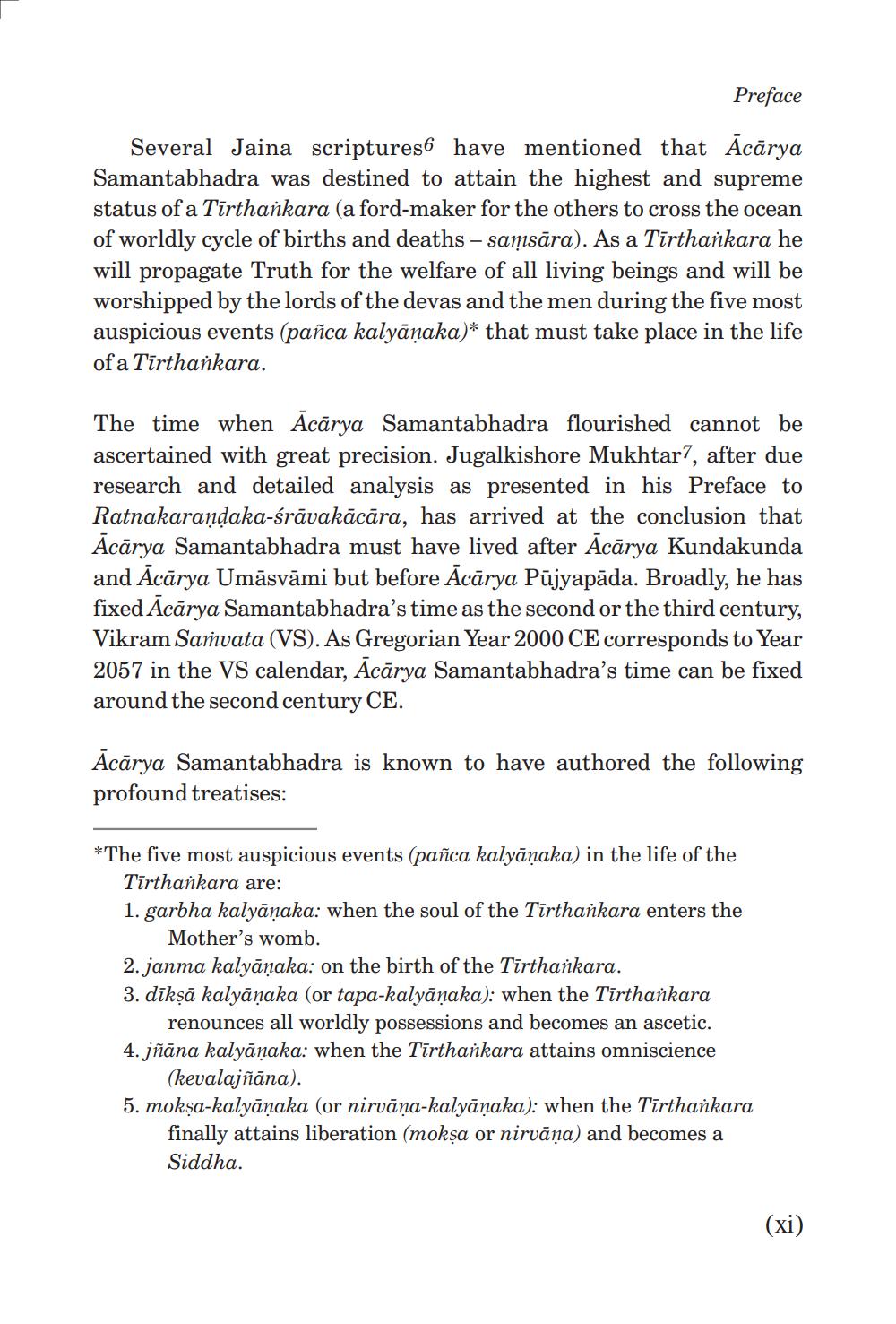________________
Preface
Several Jaina scriptures6 have mentioned that Ācārya Samantabhadra was destined to attain the highest and supreme status of a Tīrthankara (a ford-maker for the others to cross the ocean of worldly cycle of births and deaths - samsāra). As a Tīrthankara he will propagate Truth for the welfare of all living beings and will be worshipped by the lords of the devas and the men during the five most auspicious events (pañca kalyāņaka)* that must take place in the life of a Tīrthařkara.
The time when Ācārya Samantabhadra flourished cannot be ascertained with great precision. Jugalkishore Mukhtar7, after due research and detailed analysis as presented in his Preface to Ratnakarandaka-śrāvakācāra, has arrived at the conclusion that Acārya Samantabhadra must have lived after Acārya Kundakunda and Ācārya Umāsvāmi but before Ācārya Pūjyapāda. Broadly, he has fixed Ācārya Samantabhadra's time as the second or the third century, Vikram Samvata (VS). As Gregorian Year 2000 CE corresponds to Year 2057 in the VS calendar, Acārya Samantabhadra's time can be fixed around the second century CE.
Acārya Samantabhadra is known to have authored the following profound treatises:
*The five most auspicious events (pañca kalyānaka) in the life of the
Tirthankara are: 1. garbha kalyānaka: when the soul of the Tīrthařkara enters the
Mother's womb. 2. janma kalyāņaka: on the birth of the Tīrthankara. 3. dīkņā kalyāņaka (or tapa-kalyāņaka): when the Tīrthankara
renounces all worldly possessions and becomes an ascetic. 4. jñāna kalyānaka: when the Tīrthankara attains omniscience
(kevalajñāna). 5. mokşa-kalyāņaka (or nirvāņa-kalyāṇaka): when the Tīrthankara
finally attains liberation (moksa or nirvāna) and becomes a Siddha.
(xi)




